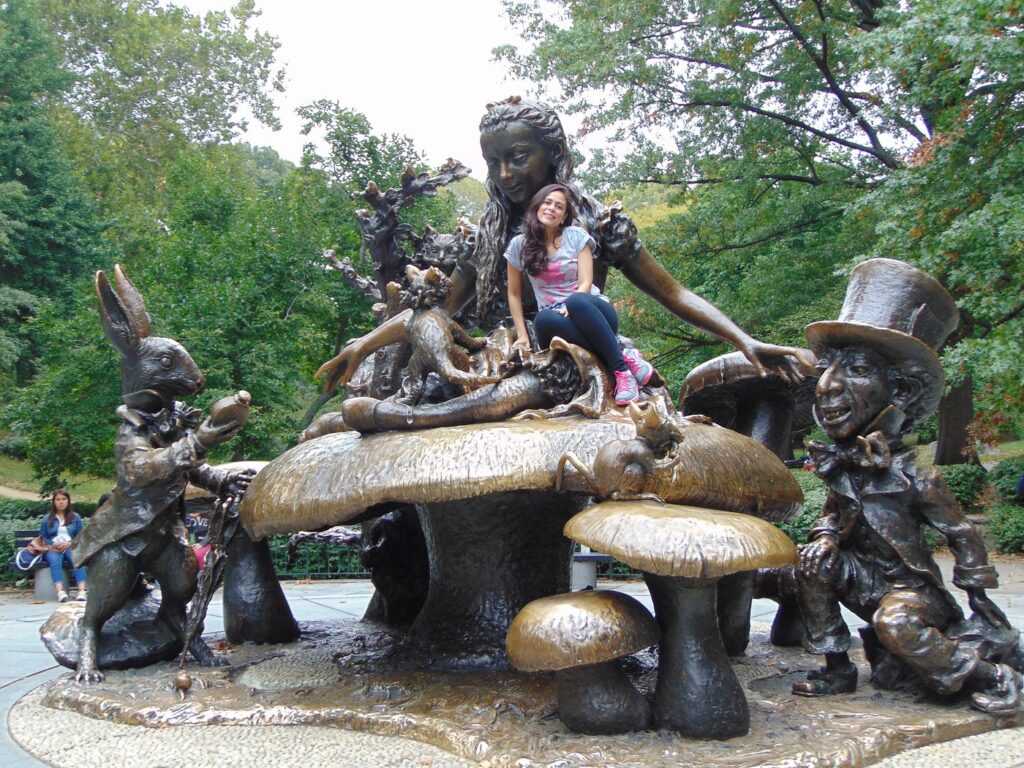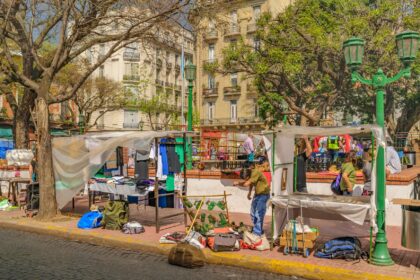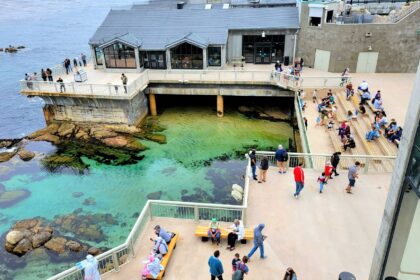New York City is famous for its iconic landmarks like the Statue of Liberty, Times Square, and the Empire State Building. But beyond these world-renowned attractions lies a treasure trove of quirky, unusual, and downright bizarre roadside attractions that most visitors—and even locals—never discover. From giant sculptures hidden in plain sight to mysterious monuments tucked away in forgotten corners, NYC’s strangest roadside attractions offer a completely different perspective on the city that never sleeps.
What Makes NYC’s Roadside Attractions Special?
Unlike the classic American roadside attractions found along remote highways, New York City’s quirky spots are often hidden in the urban jungle, nestled between skyscrapers, or disguised as ordinary city fixtures. These unusual attractions reflect the city’s eclectic personality, its rich immigrant history, and the creative spirit of its residents who’ve transformed everyday spaces into something extraordinary.
The Most Unusual Roadside Attractions in Manhattan
The Sphere at Battery Park
While many know about the damaged sphere that once stood in the World Trade Center plaza, fewer realize that Fritz Koenig’s bronze sculpture, officially called “Sphere for Plaza Fountain,” has become an unexpected roadside attraction. Located in Battery Park, this 25-foot-tall damaged sphere serves as both an art piece and a memorial, drawing visitors who stumble upon it while exploring the southern tip of Manhattan.
The Whispering Gallery at Grand Central Terminal
Hidden within one of the world’s most famous train stations is an acoustic marvel that functions as a quirky attraction for those in the know. The arched ceiling outside the Oyster Bar creates a “whispering gallery” where two people can stand at diagonal corners and have a conversation in whispers that carries perfectly across the space, while remaining inaudible to people standing in between.
The Mysterious Pneumatic Postal System
Beneath the streets of Manhattan lie remnants of the city’s forgotten pneumatic postal system. While most of the network is inaccessible, knowledgeable urban explorers and history enthusiasts can spot the occasional manhole cover or building fixture that hints at this underground marvel that once whisked mail through tubes at 35 mph.
Alice in Wonderland Sculpture in Central Park

Located near the Conservatory Water at 74th Street, this bronze sculpture isn’t exactly hidden, but it’s often overlooked by tourists rushing between major Central Park attractions. Created by José de Creeft in 1959, the 11-foot-tall mushroom topped with Alice, the Mad Hatter, and other characters from Lewis Carroll’s tale has become a beloved climbing structure and photo opportunity.
Brooklyn’s Bizarre Roadside Discoveries
The Brooklyn Superhero Supply Co.
What appears to be a legitimate superhero supply store in Park Slope is actually the front for 826NYC, a nonprofit writing center. Complete with capes, grappling hooks, and “invisibility paint,” this quirky storefront attracts curious passersby who can’t quite figure out if it’s real or elaborate performance art.
The Interference Archive
This grassroots archive in Park Slope houses one of the world’s most unusual collections of protest ephemera, propaganda, and social movement materials. While technically a cultural institution, its storefront appearance and unexpected subject matter make it feel like stumbling upon a roadside attraction dedicated to the art of dissent.
The Masstransiscope
Hidden in the abandoned Myrtle Avenue subway station, this subway “movie” by artist Bill Brand transforms a tunnel wall into the world’s longest underground movie. Passengers on the B and Q trains can catch glimpses of this animated sequence through their windows, making it perhaps the city’s most mobile roadside attraction.
Brooklyn’s Statue of Liberty
Few people know that Brooklyn has its own Statue of Liberty replica. Standing 36 feet tall on top of Liberty Warehouse in Red Hook, this quarter-scale version of the famous statue offers a quirky photo opportunity with stunning views of the real Lady Liberty across the harbor.
Queens: The Borough of Hidden Oddities
The Unisphere and Queens Museum
While the Unisphere from the 1964 World’s Fair is well-known, the surrounding area in Flushing Meadows Corona Park contains numerous forgotten Fair remnants and quirky installations that make for an excellent roadside attraction tour, including the bizarre concrete “time capsules” buried throughout the park.
The Louis Armstrong House Museum
This modest house in Corona, Queens, where the jazz legend lived from 1943 until his death in 1971, feels more like a roadside curiosity than a traditional museum. The home remains exactly as Louis and his wife Lucille left it, complete with 1960s décor and Armstrong’s personal effects creating an unexpectedly intimate attraction.
Flushing Meadows Corona Park’s Forgotten Pavilions
Scattered throughout the park are remnants and reimagined structures from both the 1939 and 1964 World’s Fairs. These concrete and steel oddities, now serving various purposes or simply standing as monuments to futuristic dreams of the past, create an otherworldly landscape that feels like discovering alien artifacts.
The Bronx: Unexpected Treasures in the Urban Landscape
Edgar Allan Poe Cottage
This tiny wooden cottage where Edgar Allan Poe spent his final years feels completely out of place in the urban Bronx landscape. Surrounded by modern apartment buildings, this preserved 19th-century home creates a surreal juxtaposition that makes it feel like a roadside attraction that somehow time-traveled to the wrong century.
The Bronx Zoo’s Unusual Outdoor Sculptures
Beyond the animals, the Bronx Zoo houses numerous quirky sculptures and installations throughout its grounds. The giant bronze animals scattered around the parking areas and entrances create unexpected encounters that feel more like roadside art installations than zoo exhibits.
High Bridge
The oldest surviving bridge connecting Manhattan and the Bronx, this 1848 aqueduct bridge was recently reopened as a pedestrian walkway. Its unusual architecture and the surprise of discovering a 19th-century Roman-style aqueduct in the middle of the city makes it feel like stumbling upon an ancient roadside wonder.
Staten Island’s Surprising Attractions
The Staten Island Boat Graveyard
While not easily accessible, the Arthur Kill ship graveyard near the Staten Island shore contains dozens of abandoned boats and ships in various states of decay. This haunting maritime cemetery can be viewed from certain vantage points and has become a pilgrimage site for urban explorers and photographers.
Historic Richmond Town
This living history village might seem like a traditional attraction, but stumbling upon colonial-era buildings and costumed interpreters while driving through modern Staten Island creates a roadside time-warp experience that feels more like discovering a movie set than visiting a planned attraction.
The Conference House
This 17th-century stone house where Benjamin Franklin, John Adams, and others met with British Admiral Lord Howe in a failed peace conference during the Revolutionary War sits isolated at the southern tip of Staten Island. Its remote location and historical significance make it feel like a hidden roadside historical marker.
Tips for Exploring NYC’s Quirky Roadside Attractions
Planning Your Route
Unlike traditional road trips, exploring NYC’s roadside attractions requires strategic planning around public transportation, walking distances, and opening hours. Many of these spots are best discovered as part of neighborhood walking tours rather than dedicated destinations.
Best Times to Visit
Early mornings and weekdays often provide the best experience for photographing and enjoying these attractions without crowds. Many outdoor sculptures and installations are accessible 24/7, making them perfect for sunrise or sunset visits.
What to Bring
A good camera, comfortable walking shoes, and a sense of adventure are essential. Many of these attractions don’t have official websites or clear signage, so having offline maps and doing preliminary research helps ensure you can find them.
Respect and Safety
Remember that some of these attractions are located in residential neighborhoods or active business districts. Be respectful of local residents and private property, and always prioritize safety when exploring urban environments.
The Stories Behind the Attractions
Each of these quirky roadside attractions has a story that reflects New York City’s complex history. From World’s Fair remnants that represent optimistic visions of the future to immigrant community monuments that celebrate cultural heritage, these unusual spots serve as unintentional time capsules and cultural artifacts.
The pneumatic postal system remnants tell the story of early 20th-century innovation and ambition. The scattered World’s Fair artifacts remind us of moments when the world gathered in Queens to imagine tomorrow. The hidden sculptures and installations reflect the creativity of artists who found ways to bring beauty and wonder to unexpected urban spaces.
Why These Attractions Matter
In a city dominated by major tourist destinations and commercial attractions, these quirky roadside spots offer something more personal and authentic. They represent the layers of history, creativity, and community that make New York City unique. They’re the kind of discoveries that make you feel like you’ve uncovered a secret, even in one of the world’s most well-documented cities.
These attractions also serve as reminders that wonder and curiosity can be found anywhere. You don’t need to drive across the country to find roadside oddities—sometimes the most interesting discoveries are hidden in plain sight in your own neighborhood.
Making the Most of Your Quirky NYC Adventure
The best way to experience these attractions is to approach them with the same spirit of discovery that drives people to seek out roadside attractions on cross-country road trips. Combine several in a single day, create photo documentation of your finds, and don’t be afraid to ask locals about other unusual spots they might know.
Consider creating your own map of discoveries, sharing your finds on social media with location tags, and encouraging others to seek out these hidden gems. Many of these attractions survive and thrive because of word-of-mouth discovery and the enthusiasm of urban explorers who appreciate the unusual and unexpected.
Conclusion
New York City’s quirky roadside attractions prove that you don’t need to leave the five boroughs to discover the unexpected, unusual, and utterly fascinating. From sculptures hiding in plain sight to historical oddities tucked away in forgotten corners, these attractions offer a different way to experience the city that never sleeps.
Whether you’re a lifelong New Yorker looking to see your city with fresh eyes or a visitor seeking experiences beyond the typical tourist trail, these roadside attractions provide moments of wonder, surprise, and discovery that capture the true spirit of urban exploration. They remind us that in a city of eight million people and countless stories, there are still secrets waiting to be discovered around every corner.
So grab your camera, put on your walking shoes, and start exploring. NYC’s quirkiest roadside attractions are waiting for you to find them, photograph them, and add them to your own personal map of the city’s most unusual treasures.
In another related article, Is New York affordable to visit? – Exploring the Affordability of Visiting New York City







